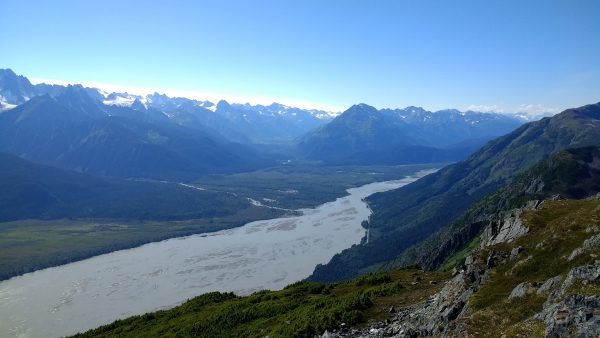
HAINES – A fuel spill from half a century ago is polluting soil and water on the Chilkat River near Haines, and the U.S. Army Corps of Engineers wants advice on how to clean it up.
In the 1950s, the Army built an 8-inch diameter pipeline to carry fuel from Haines to Fairbanks. During the decade it operated, numerous spills occurred. One was the result of rupture at a pump station near Haines in the late 1960s.
“Approximately 33,600 gallons of fuel were released, ” said Will Mangano, the Corps of Engineers technical lead of the project.
It wasn’t until the mid-1980s that Congress created a federal program to organize cleanups for pollution of this type. The program is known as FUDS— Formerly Used Defense Sites. Alaska has some 500 FUDS locations.
Back in the day, the Army dug up the soil around the Haines leak and burned the fuel.
“That was basically the extent of the cleanup that occurred after the release was identified. Definitely contamination made its way into the subsurface in the area and it has remained there ever since,” Mangano said.
Fifty-two years later, there’s finally a plan to clean it up.
The contaminated area is on the bank of the Chilkat River. The Chilkat is a food source for Haines and Klukwan, and spawning grounds for all five species of Pacific salmon.
The Corps of Engineers investigated the Haines spill site in 2012 and found gasoline, diesel and benzene in the soil and groundwater. A few years later, they noticed an oily sheen on the surface of the Chilkat River slough. Surface water samples showed contamination levels that warranted a cleanup. Contaminants were found up to 14 feet deep in the soil.
“It’s still causing risk to human health and the environment,” said Anne Marie Palmieri, an environmental systems specialist for Alaska’s Department of Environmental Conservation. DEC regulates cleanup at the site, and Palmieri is the project manager.
“It’s really exciting to me to get to this point where we are going to actually start digging up some dirt,” she said.
The Corps proposes a range of solutions. Its preferred alternative is the most rigorous: The agency proposes to excavate 17,500 tons of contaminated soil and treat it with a process called “land farming” to neutralize the contamination. The plan calls for backfilling with clean soil and materials intended to keep any remaining contamination from spreading. Excavating all the contaminated soil isn’t possible without digging up a portion of the Haines Highway.
Even after the cleanup, the Corps is obligated to monitor soil and water at the site in perpetuity, or until no contaminants are detected.
The public can comment on the plan until March 6.




